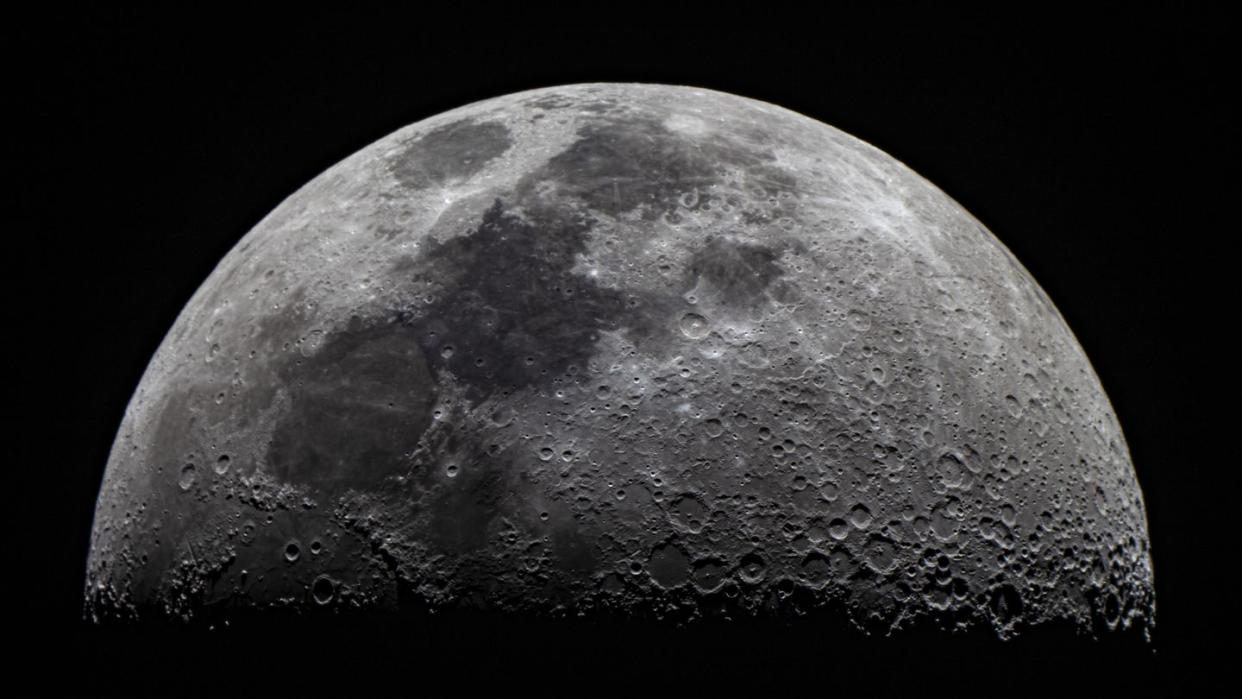Welp, So Much For Sending Humans Back to the Moon in 2024

"Hearst Magazines and Yahoo may earn commission or revenue on some items through these links."
In November of 2024, NASA had planned to return astronauts to lunar orbit through the Artemis II mission, but those ambitious dreams have been postponed.
NASA officials announced on Tuesday that Artemis II won’t launch until at least September of 2025, and cited ongoing tests of equipment necessary to ensure astronaut safety as the cause.
As a result of this delay, the subsequent Artemis III Moon-landing mission has been delayed until 2026.
2024 was shaping up to be a big year for space. And, to be fair, it still is. NASA plans to finally send the Europa Clipper toward Jupiter’s most promising candidate for life, and the agency’s Parker Solar Probe will also make its closest approach to the Sun this year.
But the much-anticipated Artemis II mission was set to finally return astronauts to lunar orbit. And now we have to scratch that one off the calendar.
According to a NASA announcement on Tuesday, the space agency needs a bit more time to make sure the Artemis II is a mission success—nearly a whole year of time. Originally slated to launch sometime in November of 2024, NASA’s new target date for the mission is now September of 2025.
And like most logistical traffic jams, the holdup doesn’t stop with Artemis II mission. The delay has also pushed back Artemis III, which will place boots on the Moon’s surface, back to 2026.
“We are returning to the Moon in a way we never have before, and the safety of our astronauts is NASA’s top priority as we prepare for future Artemis missions,” NASA Administrator Bill Nelson said in a press statement. “We’ve learned a lot since Artemis I, and the success of these early missions relies on our commercial and international partnerships to further our reach and understanding of humanity’s place in our solar system.”
NASA originally set the deadline for landing on the Moon for 2024, which is a date the Government Accountability Office determined to be unrealistic in back in 2021. The date was subsequently moved to 2025.
One of the major problems the Artemis team has to solve is the unexpected level of char loss from the heat shield that was noted when NASA tested the Orion capsule during 2022’s Artemis I. The first Artemis mission was uncrewed, and was designed to test the SLS, Orion, and other mission systems. Following that mission, NASA reported that “the ablative material that helps protect the capsule from the extreme heat of reentry wore away differently than predicted.” NASA says it hopes to conclude its investigation by spring 2024.
The electrical system used during a crew abort maneuver, which pulls the capsule away from the SLS, presents yet another challenge. NASA said the system wasn’t performing “as expected” during testing, and will need further investigation.
Of course, mission delays were a feature of NASA’s now legendary Apollo program in the 60s and early 70s as well. The biggest one occurred after the Apollo 1 crew burned alive on the launch pad during a test failure, almost ending the spaceflight program altogether. NASA’s words on Tuesday echo a strong desire to never repeat that particular piece of history.
“We are letting the hardware talk to us so that crew safety drives our decision-making,” NASA associate administrator Catherine Koerner said in a press statement. “We will use the Artemis II flight test, and each flight that follows, to reduce risk for future Moon missions.”
You Might Also Like

